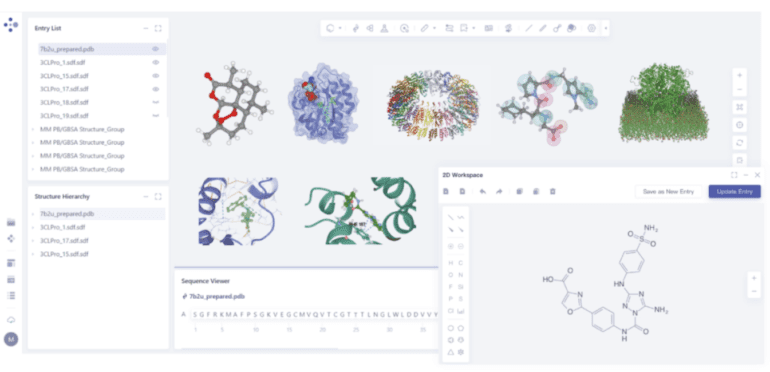TL;DR:
- DP Technology, known as “Deep Potential,” is a Chinese startup aiming to revolutionize scientific research using artificial intelligence and molecular simulations.
- Founded in 2018, DP offers tools for scientific computing, enabling faster and cheaper development of materials like semiconductors and batteries.
- DP’s unique approach combines machine learning with molecular simulations to solve real-world problems with increased speed and accuracy.
- Traditional trial-and-error methods are no longer sufficient in today’s rapidly evolving markets, driving the need for DP’s innovative solutions.
- DP has successfully implemented a combination of SaaS and service business models, with expected contracts worth $14 million in 2023.
- Despite facing giants like DeepMind, DP has raised $140 million from Chinese VC firms.
- DP’s international expansion starts in the U.S., focusing on building a reputation within the scientific research community.
- Geopolitical challenges may arise, but DP’s CEO remains optimistic about science’s resilience.
Main AI News:
In a climate where many Chinese tech enterprises are strategically downplaying their origins amid escalating geopolitical tensions, one innovative startup stands apart boldly. DP Technology, also known as “Deep Potential,” is on a mission to harness the potential of artificial intelligence in molecular simulations. With a steadfast commitment to “scientific research for humanity,” DP is charting its course toward global expansion.
Founded in 2018, with renowned mathematician Weinan E as its advisor, DP offers a suite of tools for scientific computing. This process, which involves computer simulations of mathematical models, plays an indispensable role in technological development and scientific research, as defined by the University of Waterloo. Scientific computing finds applications in diverse fields, from biopharmaceutical research and automotive design to semiconductor development.
In a landscape currently dominated by AI’s text, image, and video generation capabilities, DP has chosen a less-explored path. By combining machine learning, which facilitates computers to learn autonomously from provided data, with molecular simulations, the company delves into the realm of real-world product and system analysis through virtual models. The synergy of these technologies enhances the speed and precision of simulations, offering solutions to real-world challenges.
DP’s CEO and founder, Sun Weijie, pointed out the limitations of the traditional approach, where trial and error were heavily reliant on experience. He referred to this as the era of ‘cooking’ or ‘alchemy.’ Sun emphasized that as market expectations for rapid technological advancements grow, the traditional research and development model can no longer keep pace. DP aims to spearhead a breakthrough in the approach to research and development to meet these evolving demands.
To achieve this, DP has developed a suite of software solutions for industry players to discover and develop new products more efficiently. Their scientific computing platform enables simulations of physical properties like magnetism, optics, and electricity, which, in turn, expedite the design of materials such as semiconductors and batteries. Additionally, DP offers a SaaS platform tailored for preclinical studies in drug discovery. Beyond software, DP extends its services to cater to the specific needs of industrial researchers and designers, bridging the gap for those who may not fully leverage their tools.
This combination of SaaS and service models has garnered initial success in China, with DP expected to secure nearly 100 million yuan ($14 million) worth of contracts in 2023, a significant leap from “tens of millions of yuan” the previous year. Now, DP is poised to take this strategy to Western markets, despite competing against deep-pocketed giants like DeepMind.
Sun acknowledges the funding disparity, stating, “There’s an old saying in China: The children from the poor become mature early. With much less funding at hand, we are the poor kids compared to the likes of DeepMind and OpenAI.”
To date, DP has raised approximately $140 million from prominent Chinese VC firms such as Qiming Venture Partners and Source Code Capital. For perspective, DeepMind, founded 13 years ago, was acquired by Google for over $500 million in 2014 and reported a profit of £44 million ($60 million) in 2020, following a staggering £477 million ($650 million) loss in 2019.
DP’s global vision was not solely born in Beijing; it was shaped by an open-source scientific computing community it founded, known as DeepModeling. The startup’s early focus on China was partly due to the COVID-19 pandemic, which hindered international exchanges, prompting DP to concentrate on monetization within China for its first two years.
DP’s international expansion begins in the United States, where it plans to establish an office and collaborate with partners for product and service distribution. Leveraging its open-source community and participation in trade shows within the scientific research domain, DP aims to build its reputation within this relatively “close-knit circle” of basic research.
Despite potential challenges arising from the ongoing decoupling between the U.S. and China in various areas, including scientific research, Sun remains optimistic about the resilience of science in the face of geopolitical complexities. He states, “Both the fields of basic science and biopharmaceuticals are shared by all of humanity, and they are relatively open and inclusive. Comparatively speaking, I believe that these areas will be fine.“
Conclusion:
DP Technology’s innovative approach to scientific computing, combining AI and molecular simulations, positions it for significant growth in the global market. Their success in China, strategic expansion into the U.S., and commitment to open-source research communities demonstrate their potential to disrupt traditional research and development methods.

